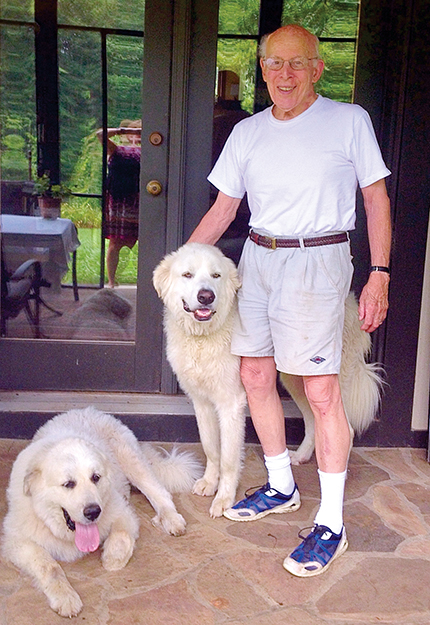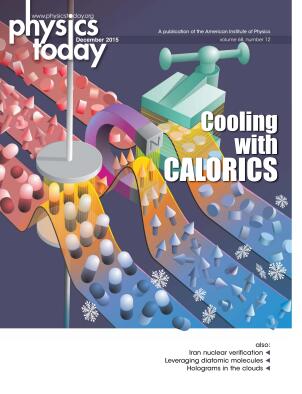John Howard Gibbons
DOI: 10.1063/PT.3.3031
John Howard Gibbons, who had an extraordinary career as a nuclear physicist, educator, and public servant, died on 17 July 2015 in Crozet, Virginia, from complications of a stroke.

John Howard Gibbons

Born in Harrisonburg, Virginia, on 15 January 1929, Jack developed a lifelong love of nature and hiking and was an intrepid cave explorer. Scouting was also central to his youth; he ran a Boy Scout camp at age 13 and subsequently became an Eagle Scout and a member of the Order of the Arrow, scouting’s national honor society.
Jack received his bachelor’s degree in mathematics and chemistry from Randolph-Macon College in 1949 and his PhD in physics from Duke University in 1954 under the direction of Henry Newson.
Jack began his research career in 1954 at Oak Ridge National Laboratory. In a pursuit he called “solar-system pediatrics,” he carried out experiments on nuclear structure with emphasis on neutron-capture reactions that are key to understanding nucleosynthesis of heavy elements in stars. He was the physics division group leader in nuclear geophysics and astrophysics. Jack also worked on energy efficiency technologies, ballistic missile defense, and environmental issues, and from 1969 to 1973 he directed the lab’s environmental program.
In 1973 President Richard Nixon appointed Jack as the first director of the Office of Energy Conservation, where he directed federal programs on energy efficiency, the Federal Energy Management Program, and other initiatives.
At the University of Tennessee from 1975 to 1979, Jack was a professor of physics and served as director of the Energy, Environment and Resources Center. In 1976–79 he chaired the Panel on Demand for the National Academies’ study on the future of US energy. The report argued, through engineering and economic analysis, that the US could double the energy efficiency of its economy over the next 25 years. That twofold improvement materialized.
Jack directed the Office of Technology Assessment (OTA) from 1979 to 1993 and oversaw the completion of more than 600 reports containing analysis of complex scientific and technical issues to aid in policymaking. Jack’s goal was to elevate the level of scientific discourse so that both sides of a political issue would argue with the same body of science. He felt the analysis stage was only half the job of a science adviser; translating the data into “usable information” often took just as much effort. Jack required reports to be “policy relevant, but never policy prescriptive” and aimed to shape bipartisan legislation. Two years after he left OTA, it was dissolved in a contentious budget-cutting move.
When he was named President Bill Clinton’s director of the White House Office of Science and Technology Policy (OSTP) in 1992, Jack created the first OSTP division on the environment to tackle the emerging and interlinked issues of climate change, habitat degradation, energy demand, biodiversity loss, and pollution. He was instrumental in establishing numerous administration priorities, including increasing agencies’ research budgets, creating the National Bioethics Advisory Panel and the Partnership for a New Generation of Vehicles, and signing the Comprehensive Nuclear-Test-Ban Treaty. He also oversaw the first National Climate Assessment, something he had worked to get into congressional legislation in 1990.
One of Jack’s proudest White House successes was the creation of the cabinet-level National Science and Technology Council to provide integrated science and technology research budgets across all agencies and set criteria for filling gaps and augmenting priority areas within and across disciplines. As Clinton signed the 1993 executive order, Jack was at his side; indeed, he had coffee mugs made with that photo for his senior staff.
Jack was a consummate communicator and a true civic scientist. He was greatly respected by both sides of the aisle. Soon after his appointment as Clinton’s science adviser, Scientific American ran a profile of Jack entitled “The nicest guy in Washington.”
A generous, caring, and good-hearted human being, Jack treated everyone equally. He would explain to his grandchildren how to estimate the number of grains of sand on the beach with as much care as he explained to cabinet members how nuclear weapons worked. He loved music of all kinds, played the bass washtub, and had a rich bass singing voice. Jack’s dedication to singing was such that he interviewed for the science adviser position with Clinton and Al Gore in Arkansas on Christmas Eve of 1992 but made it back to Virginia in time to perform in his church’s evening service with Mary Ann, his wife and singing partner since the day they met.
Jack had an amazing recall of about a thousand quotes, and he drew on them to spice up his invariably trenchant remarks on any topic. In speaking of OTA’s demise at a 2003 symposium at Rice University’s Baker Institute, Jack observed that OTA and Socrates had similar fates: “He gave advice to other people. He was poisoned.” Jack would also lament the attacks on mainstream climate science, claiming we had entered “the Disney era of science, where just wishing makes it so,” and he would remind all of Daniel Patrick Moynihan’s quote that “everyone is entitled to his own opinions, but not to his own facts.”
One of Jack’s favorite quotes is from Edna St. Vincent Millay and was used in the title of his 1997 book:
Upon this gifted age, in its dark hour,
Rains from the sky a meteoric shower
Of facts … they lie unquestioned, uncombined
Wisdom enough to leech us of our ill
Is daily spun, but there exists no loom
To weave it into fabric.
Upon this gifted age, in its dark hour,
Rains from the sky a meteoric shower
Of facts … they lie unquestioned, uncombined
Wisdom enough to leech us of our ill
Is daily spun, but there exists no loom
To weave it into fabric.
“Gentleman Jack” sought to weave the facts together to provide a path toward a sustainable future for all. As Gore remarked, “He was utterly unique and irreplaceable.”
More about the Authors
Rosina Bierbaum. University of Michigan, Ann Arbor.
Neal Lane. Rice University, Houston, Texas.
